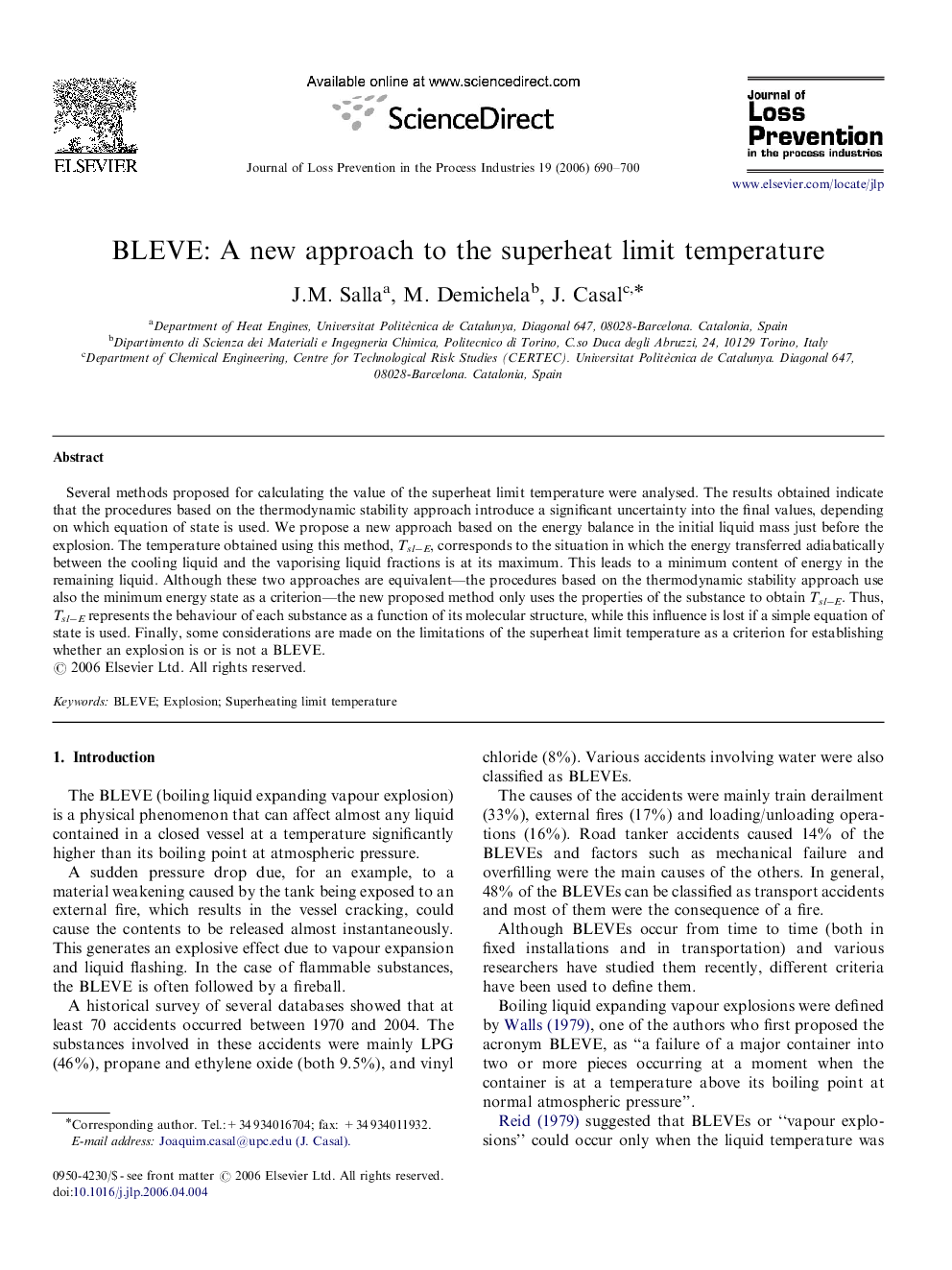| Article ID | Journal | Published Year | Pages | File Type |
|---|---|---|---|---|
| 587015 | Journal of Loss Prevention in the Process Industries | 2006 | 11 Pages |
Several methods proposed for calculating the value of the superheat limit temperature were analysed. The results obtained indicate that the procedures based on the thermodynamic stability approach introduce a significant uncertainty into the final values, depending on which equation of state is used. We propose a new approach based on the energy balance in the initial liquid mass just before the explosion. The temperature obtained using this method, Tsl−E, corresponds to the situation in which the energy transferred adiabatically between the cooling liquid and the vaporising liquid fractions is at its maximum. This leads to a minimum content of energy in the remaining liquid. Although these two approaches are equivalent—the procedures based on the thermodynamic stability approach use also the minimum energy state as a criterion—the new proposed method only uses the properties of the substance to obtain Tsl−E. Thus, Tsl−E represents the behaviour of each substance as a function of its molecular structure, while this influence is lost if a simple equation of state is used. Finally, some considerations are made on the limitations of the superheat limit temperature as a criterion for establishing whether an explosion is or is not a BLEVE.
